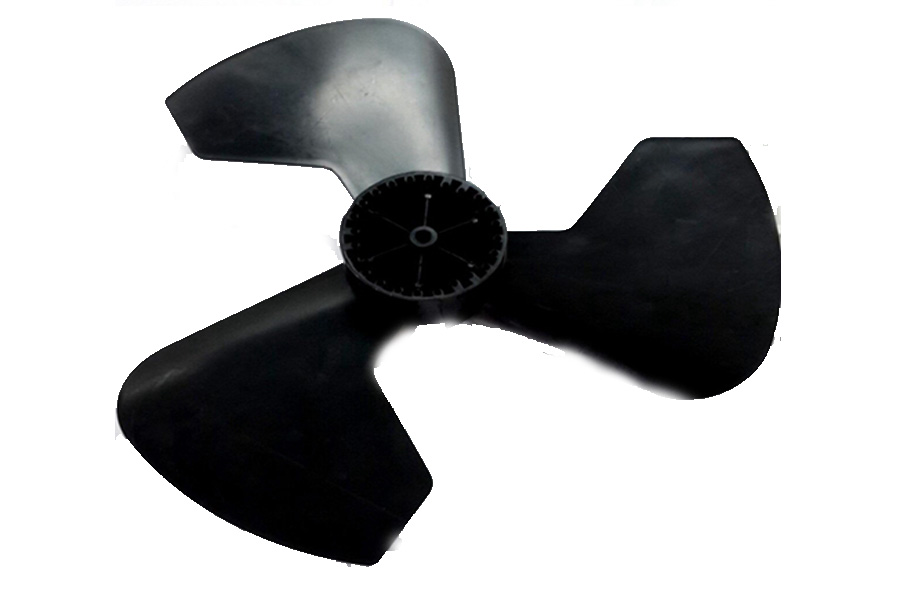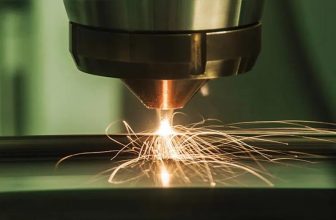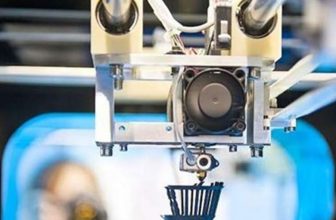
The report shows that the application of ceramic additive manufacturing will experience a growth inflection point after 2025. The main reason is that ceramic additive manufacturing 3D printing technology will gradually mature, and there is sufficient production demand on the market to support the application and development of this technology.
3D printing ceramic works
In the medium and long term, the added value of 3D printed ceramic parts will drive user demand for ceramic additive manufacturing hardware and materials. For the application of engineering ceramics and advanced ceramic materials, this trend is more obvious.
The production of ceramic parts puts forward higher requirements for the cost and process integration of ceramic 3D printing technology, but the more challenge is how to meet the quality requirements of conventional ceramic parts manufacturing.
3D printing ceramic works
Researchers from the Franhofer (HTL) Institute in Germany have studied the commonly used ceramic 3D printing technology on the market and the quality management issues in the post-processing of ceramic embryos. In this issue, 3d-printing-china.com will share Franhofer (HTL)’s overview of related issues.
Complex structure makes heat treatment more difficult
There are five main reasons for the application of 3D printing technology in the production of ceramic parts:
Realize a very lightweight structure;
- *Through a single part of the function set, it replaces the structure that needs to be composed of many components in the past, thereby saving assembly costs and improving product performance.
- *Manufacturing personalized components, such as orthopedic implants, dentures, etc.;
- *On-demand production, thus opening up new routes in logistics and spare parts supply;
Eliminates the manufacture of expensive molds and realizes the production of small-scale ceramic parts.
In general, the technologies that can be used for ceramic additive manufacturing-3D printing are divided into two categories. One is the technology that performs material molding and densification at the same time, including powder bed melting and directional energy deposition; the other is the technology that separates molding and densification, including: material injection, material extrusion, sheet lamination, Binder jetting and photopolymerization processes (SLA, DLP, etc.), these 3D printing technologies are used to manufacture ceramic green bodies, and the green bodies need to be heat treated to obtain the final product.
In the first type of additive manufacturing process, due to the application of a higher temperature gradient, higher thermal stress and damage are generated in the ceramic parts, so this type of technology is not the mainstream technology of ceramic additive manufacturing. Because the second type of technology includes several different 3D printing processes, this diversification increases the difficulty of technology application and quality management in the ceramic production field.
l Quality management of ceramic additive manufacturing
Ceramic 3D printing technology will face some challenges to achieve high strength and reliability of parts and final net shape performance. Generally, strength and reliability depend on the uniformity of the microstructure and surface roughness. Compared with standard products, it is difficult to achieve these two points using additive manufacturing technology. The deformation during the sintering process will affect the net shape performance of the part. It is recommended to use closed-loop 3D printed parts online size control technology.
3D printing technology brings a higher degree of freedom to the design of ceramic parts, and can realize structures such as free-form surfaces, lattices, and hollows. However, additive manufacturing technology still has certain design limitations, such as the need for supporting structures in the additive manufacturing and sintering process Overhanging parts. Franhofer (HTL) recommends using specific software to design ceramic parts for additive manufacturing. But most engineers need specialized training and learning to fully benefit from additive manufacturing technology.
According to its application areas, additive manufacturing must meet the same standards as conventional production processes, such as EN/AS 9100 for aerospace, IATF 16949 for the automotive industry, and ISO 13485 for medical technology. The field of ceramic additive manufacturing is still in the early stages of development. There is no specific standard for ceramic 3D printing, but many common standards can be used, such as: ISO 52910-17 of DfAM, ISO 52915-16 of file format, coordinate system and testing Method of ISO 52921-13. In addition, VDI guidelines on “Design for Additive Manufacturing” for ceramic materials are under development.
l Quality control of 3D printing ceramic embryos
Most common ceramic additive manufacturing processes include two important links, that is, sintering is required after the green embryo 3D printing is completed. The green embryo can be used for quality inspection. The key data obtained from the green body is very helpful for optimizing 3D printing parameters and raw material characteristics.
The standard of green body quality is the same as that of conventional molding: closely matching the set shape, homogeneous and dense packing of ceramic particles, homogeneous distribution of binder, smooth surface and no defects (such as voids or delamination).
Therefore, in principle, the same method as the standard process can be used to characterize the 3D printed ceramic green body. However, because the 3D printed green embryos designed for additive manufacturing have complex geometries, they are usually much more complicated than the measured shapes of green bodies in the standard molding process. Computed tomography (CT), as a non-contact method, can be used for the detection of ceramic 3D printed embryos, for example, to detect very thin pillars or cavity structures.
Figure 3a shows the vertical cross section of the alumina ceramic green part measured by CT. The 3D printing technology of this part is binder injection, and the material is dry alumina powder. In this process, only flowable powders can be used, thereby limiting the particle size to coarse powders with a diameter greater than 10 μm.
Fine ceramic particles with a diameter of less than 1 μm can be used in paste-based 3D printing processes, such as SLA 3D printing. However, the resolution of most CT equipment is insufficient to resolve the details of the microstructure. Scanning electron microscopy (SEM) can be used to study structures with high resolution (Figure 3b). It can be observed that the density of particles between the layers is lower. The overall uniformity is higher than that of ceramic parts manufactured by binder injection technology, which is a typical feature based on ceramic slurry and photopolymerized additive manufacturing processes.
l Quality problems in the heat treatment process
In principle, the problems that arise during the heat treatment of 3D printed ceramic parts are similar to those of green bodies manufactured by conventional production methods. However, optimization of heat treatment is usually more difficult. According to the characteristics of additive manufacturing technology, due to the high binder concentration and/or low interlayer adhesion, it is easy to cause delamination or cracking during degreasing. Compared with the conventional molding process, in a 3D printing process with a lower green density, sintering is usually more complicated, which may lead to increased shrinkage and warpage, and anisotropic shrinkage usually superimposes, especially for 3D printing Complex filament structure, the deformation is more serious.
However, manufacturing complex structures is a typical advantage of 3D printing technology over traditional technologies. So, how to overcome the difficulty of heat treatment of 3D printed ceramic parts, so that the ceramic production field can take advantage of the advantages of 3D printing technology?
In the degreasing process, the thermal decomposition and combustion of the binder and other organic components are accompanied by endothermic and exothermic processes. At the same time, during the outward flow of gaseous pyrolysis products, the gas pressure in the pores of the green body increases. If the corresponding stress exceeds the strength of the green body, the temperature gradient and overpressure will cause local stress concentration and failure.
In this case, degreasing simulation can be performed in a finite element (FE) model, which combines pyrolysis and combustion reactions, air flow in and on the pores, and heat flow and heat generation/consumption due to these reactions (Figure 5 ). According to the temperature and pressure distribution, the mechanical stress is calculated during the entire debinding cycle. On this basis, a degreasing cycle is performed to ensure that the stress is always far below the strength limit.
In order to obtain sufficient simulation accuracy, a certain amount of experimental data is required. Simultaneous use of thermogravimetric analysis, differential scanning calorimetry and mass spectrometry (TG-DSC-MS) for standard thermal analysis can provide input of very small samples, which correspond to the various elements in the subsequent finite element simulation.
Non-standard equipment required for degreasing optimized data collection:
- a) Thermo-optical measuring furnace;
- b) Multi-sample holder for four-point bending strength test on six partially peeled samples. Source: Process engineering
A specific thermo-optical measurement (TOM) furnace is used to measure larger samples and obtain other quantities (Figure 6a). The TOM method is also suitable for simulation verification through acoustic emission measurement to sensitively detect cracks in samples during thermal cycling.
In addition, there is an experiment-based continuous finite element model for sintering simulation. The input data for sintering are shrinkage, thermal diffusivity and viscous material properties. A special TOM furnace can be used to obtain these data. The FE model combines temperature fields, severe dynamics and mechanical stresses, as well as gravity and friction, which are important for sintering 3D printed parts.
Sometimes, melt infiltration is an alternative to sintering to obtain dense ceramic parts. In this method, the melt is immersed into the pore channels by capillary force. The post-processing of 3D printed SiC high-temperature components using melt infiltration for binder jetting has been applied in production. The 3D printed ceramic container in Figure 1a is manufactured in this way. The advantage of melt infiltration is to avoid shrinkage and sintering deformation, and is especially suitable for green parts with low sintering activity produced by binder jet 3D printing. The melt infiltration process can also be optimized through in-situ measurement and finite element simulation.
l Final inspection of 3D printed ceramic parts
Dimensional inspection is one of the most important tasks in the quality control of additive manufacturing parts. However, it becomes more difficult to handle complex structures with cavities and the like compared to conventional measurements. CT can be used as a general tool for dimensional control without being affected by structural constraints. When using a special algorithm, the deviation between the actual geometry and the target geometry can be quantitatively measured.
Due to stress concentration and for aesthetic reasons, the surface roughness of 3D printed ceramic parts can be critical and can be measured with a laser scanning microscope. Franhofer HTL uses internal software to extract several key indicators and estimate local stress concentrations. As with CT data, the surface scan can be transferred to the FE model and evaluated based on the allowable stress. If the surface is not smooth enough or the dimensional tolerances are very strict, processing cannot be avoided. For this purpose, five-axis automatic machining centers can be used, which can adjust the shape of free-form surfaces.
l Cost and efficiency factors
In addition to product quality, cost is a key performance indicator for the use of additive manufacturing in ceramic production, and cost is affected by additive manufacturing throughput and production time. Factors restricting manufacturing throughput include the 3D printing process itself and the subsequent heat treatment process. Since large furnaces can process multiple printed parts in parallel, they will not affect yield. However, heat treatment will affect the production time, especially when a longer degreasing step is required, and the time consumption will increase.
Another cost factor affecting ceramic additive manufacturing is raw materials. Currently, the raw materials used for 3D printing are much more expensive than standard raw materials. In addition, the price of industrial-grade 3D printing equipment is usually more than one million yuan, but as the lower-priced miniaturized equipment goes to the market, the investment threshold for ceramic additive manufacturing is further reduced. In addition, the cost of 3D printing will be further reduced through process automation and the integration of equipment in each link.
Each different ceramic 3D printing process has its own advantages. Among all current ceramic additive manufacturing technologies, photopolymerization 3D printing is the most relevant technology for production. The ceramic slurry used in this technology is a small particle or a mixture of particles, which can be made into a relatively high-density green embryo. Layerwise Slurry Deposition (LSD) and Free Flow Structuring (FFS) are also printing processes based on slurry materials and can be used for larger parts. LSD and FFS can print a variety of materials by adding print heads. Multi-material printing is also an advantage of the inkjet printing process. The printing resolution of this technology has been rapidly improved, but subsequent sintering limits the application of multi-material additive manufacturing. In this case, it is necessary to adapt to the shrinkage performance.
According to the current development of ceramic 3D printing technology, 3D printing will be selectively used in the production of small batches and high value-added ceramic parts. Manufacturers can choose ceramic 3D printing technology according to specific production tasks.





